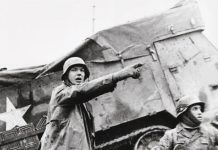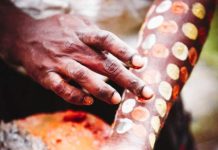It is believed that the Kwai River Bridge was part of the meter gauge railway built for the Japanese at the time of World War Two. It is well-known as the backdrop for a film of the same name in 1957. The World War II epic Bridge that crossed the River Kwai.
In 1939, prior to the time that Japan began World War II, Japanese planners envisioned a railway line that would transport 3,000 tons of supplies every day to aid the troops stationed in remote Burma. With the awe-inspiring terrain and unconsidered tropical climate, Japanese engineers predicted that around 5 years would be needed for the completion of the 257-mile rail line.
The main obstacles in the construction of the Kwai River Bridge were mountain cuts and gorges, which would require a variety of bridges around 600 total, with the majority of them located in Thailand. It was not completed and was delayed until the 16th of September 1942. Converging lines were started with two terminals already in operation, located situated at Thanbyuzayat, Burma, and at Nong Pladuk, Thailand (About 25 miles to the west of Bangkok).
The lines were planned to be moved towards each other. Construction crews included around 60000 Allied soldiers, including 30,000 British prisoners as well as 18,000 Dutch and 13,000 Australian as well as 700 U.S. soldiers.
Furthermore, there were 250,000 Malays, Chinese, Tamils as well as Burmese were employed as slaves. Of the POWs It is estimated that 16,000 died, the majority of them from illnesses that are that were endemic to the area and also from the effects of malnutrition, abuse, or just plain exhaustion.
In particular, starting in the month of January 1943 during an extremely fast period of construction, which the camp’s authorities called “speedo” the prisoner, was pushed to death. For the Asian slaves, death rates were more than that of POWs. There is an approximation to be more than 80,000 people died.

Therefore, the work was completed on the railway in not 5 years but 16 months, with the two lines, joined 23 miles to the south from Three Pagodas Pass in April 1943.
The Japanese operated the line for 21 months before it was severely damaged due to Allied air attacks, which included ones that used a novel kind which was radio controlled, known as the “AZON” bomb.
Other than the more than 80 miles of tracks located in Thailand in the region between Nong Pladuk and Tha Sao that is still in operation the railway was shut down after the war ended.
The River Kwai Bridge is the most well-known of the 600+ bridges on which tracks were once a part. It spans 1,200 feet across the Kwai in a location that the prisoners referred to as Hellfire Pass because, at night, at the summit of the mountain’s mountain ridge burning torches spewed across the construction sites and camps were like fires from hell.
The Kwai River Bridge took 9 months to construct as prisoners and other workers worked 18-hour shifts. The bridge’s construction became the focus of a well-known 1957 film, directed by David Lean and starring Alec Guinness, The Bridge over the River Kwai.
Although the film is widely regarded as to be a masterpiece of cinema, it has no basis in the actual realities of the POW experiences at Kwai or anywhere else on the Burma-Thailand Railway.
Read More – Sergeant Stubby – Most Decorated War Dog of World War 1







